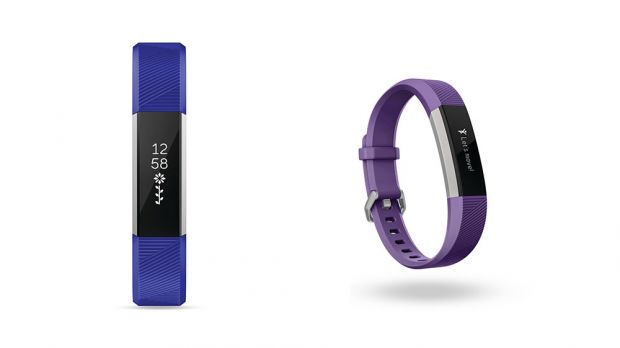You can trust Coach
The Fitbit Ace is built on a simple idea: give kids a reason to get off their behinds and on their feet with an affordable and child-friendly tracker.
The Ace is certainly more child-friendly than a regular Fitbit, restricting the data they see and giving parents control over the account. At £80, it’s Fitbit’s second most affordable tracker behind the Zip and the same price as Garmin’s tracker for children, the Vivofit Jr.
But to find out if the Ace was compelling enough to command the attention of kids for the long haul, I got my hands on a pair of Aces – one for my 11-year-old girl, one for my video-game-addicted 13-year-old boy. Rather than rush to a verdict within a week, I waited until the first flush of new gadget excitement faded to see if the Ace’s appeal would diminish over five weeks.
Fitbit Ace: The Basics
The Ace is a very basic device. There’s no heart rate monitor, no GPS, no colour screen and no apps. Nor are there text and calendar alerts from a synced smartphone, and Fitbit withholds some adult-appropriate data like the potentially dubious calories burned. These are all sensible moves when your target market includes eight-year-olds.
Nor are there many customisation options of the super-bright but mono 128x36-pixel screen: there’s only so much fun to have picking from the ten different clock faces and choosing whether or not to view the clock, active minutes and battery level.
There’s not a lot to see on the device, either. Give the screen a firm tap and it will flick between screens showing the clock face, active minutes, steps, alarm details and battery status, but that’s your lot. The screen occasionally springs into life with celebratory messages, such as fireworks appearing when you hit your goal, and there’s a flower that grows the more active minutes you do.
The design is so close to the Fitbit Alta that you’d be forgiven for confusing the two; the Ace has the hallmarks of an adult’s tracker – not necessarily a bad thing. It’s in stark contrast to its nearest rival, the Garmin Vivofit Jr, which is all vibrant colours and dinosaur icons. In truth, though, the two aren’t really in competition, offering dramatically different experiences. You’ll know if your child is better suited to a Vivofit Jr or Ace at first glance.

If anything, Fitbit has played it too safe with the Ace’s design. You have two strap colours to choose from at time of purchase, blue and purple. You can switch to a more stylish strap designed for the Alta, but that’ll cost you (£20-£70 – probably best to deny the existence of £200-plus designer straps from Tory Burch and Public School) and the straps are sized for adult wrists. That said, children with larger wrists may struggle to slot their wrists in the one-size-fits-all supplied wristband anyway (check out the Fitbit sizing guide if you’re concerned).
Using The Fitbit Ace
The first hurdle I faced in persuading my son to adopt the Ace was getting him to relinquish his phone long enough for me to log into my Parent account on the Fitbit app, then add him as a child. The second problem quickly emerged: he was too old for the Ace. While Fitbit says the Ace is for the ages of eight and above, it really means eight to 12. For the sake of setting him up, I lied and made him a year younger.
Then I came to my 11-year-old daughter. So far, I’ve avoided giving her a smartphone. Fitbit’s set up the system so that this doesn’t matter – parents create the master account on their phone and then add their children. Kids can either see a limited view of their activities on their own phones like my son, or log into the app on their parent’s phone to see how they’re doing against family members.
Parents also keep control of contacts. No-one from outside your friends list can issue a (friendly) steps challenge or message your kids, making this a safe environment. The drawback: if young Susan decides she wants to challenge her friend Siobhan, Siobhan needs to be added to the parents’ friends list. Something you may be reluctant to do if it turns out Siobhan keeps blowing up your feed.
For more detail, the child needs to log into the app. From here, they have a limited amount of control. For instance, in the first couple of weeks my son enjoyed upping his own daily step target, but he lost interest after a couple of days. He also took control of the silent alarms, where the Ace vibrates, although I found this had a 0% success rate at actually waking him up.
The sleep tracking function also failed to last the distance. While my children needed no persuasion to sleep with the Ace on their wrists at first, within a week it always ended up sitting on the bedside table. Why? In part, comfort. The Ace’s design is fine during the day, but my daughter complained about it digging into her wrist at night. The other consideration is, what’s the point? It turns out my children have no interest in their sleep patterns, and who can blame them?
Another barrier to useful, regular usage turned out to be battery life. Fitbit accurately claims the Ace will last for four to five days when in use, and it only takes a couple of hours to charge via the proprietary clip-on charger – plug it into a USB port and forget about it. Turns out kids do forget about it. They would either leave the Ace to be charged for days, or tell me three days later that it had run out of battery and ask if I knew where the charger was.
So why weren’t they more into it? One clue lies in the Fitbit app, which hasn’t been tweaked enough for its audience. Click on the Challenges tab and the first thing you see is Yosemite Bases Valley Loop. Not of much interest to an 11-year-old in Buckinghamshire. Or they can choose the Workweek Hustle, despite their working life being many years away. None of this is disastrous, but nor is it kid-friendly.
See related
- Here’s Where To Find A Bunch Of Healthy Meal Ideas For Kids
- The Best Fitness Trackers Of 2021
- Make This Healthy Banana Flapjacks Recipe With Your Kids
Fitbit Ace Verdict
So is there enough here to keep children hooked? Yes, but with caveats.
First, competition is crucial to whether or not the Ace sits on the wrist or unloved in a drawer. If my family’s five weeks with the devices shows anything, it’s that if children don’t battle for step supremacy with friends and family, then the Fitbit Ace is frankly doomed. You need to set up a group for them to challenge.
I also think that if your child doesn’t have a phone then it’s unlikely to keep them hooked. It’s all very well manually checking to see if you’ve beaten your brother’s step totals that day, but that gets tiresome after a week. You want to see it on a screen and, as my daughter discovered with her errant father, that’s not always possible. What’s the point of being the number one stepper if you don’t know and can’t boast about it?
It can work brilliantly, though. Children naturally take more steps than adults, and what’s more fun than whupping your parents, aunties and uncles at something as simple as steps?
I’d also hesitate to give it to a child aged 11 or 12. If I was going to buy a Fitbit for my daughter, I’d opt for the Alta or Alta HR. It’s that much more sophisticated, and children aren’t fond of being pigeon-holed as kids once they reach secondary school age.
That leaves the Ace with a narrow age band, and leaves me wondering if Fitbit might be wise to lower the age of its target market and add a bit more fun to the next-generation Ace – not just in the hardware design but the challenges built into the software. And if it does decide to tackle the Garmin Vivofit Jr head on, it needs to make the Ace swim-proof too.
£79.99, buy from fitbit.com/uk

